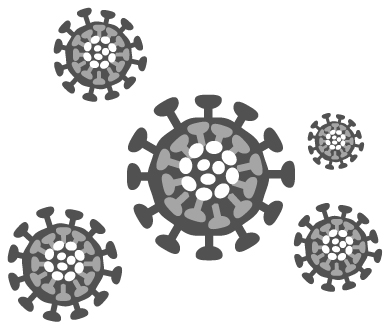 March 29, 2020
March 29, 2020
By Liu Lihong
Professor Emeritus,
Institute for the Clinical Research of Classical Chinese Medicine,
Guangxi University of Traditional Chinese Medicine and Pharmacology
Translated by Heiner Fruehauf
National University of Natural Medicine, College of Classical Chinese Medicine
As the novel coronavirus is racing across the entire planet, the following aphorisms keep assaulting my mind: “There are no perfect eggs to be found below an overturned nest;” “If the Dao grows by a foot, evil will grow by ten feet.” “Defeated by the very first blow.” Etc. etc. A tiny virus, a microbe that does not even comprise a tiny fraction of a billion of human body mass, is breaking through our defenses and going in deep. As every country in the world is mounting chaotic knee-jerk defenses against the epidemic, and as all eyes are on the pathogen that causes the disease called COVID-19, what other pressing matters could there possibly exist for humanity to contemplate?
![]()
Chinese Medicine Insights About the Nature of Epidemics Are Ancient and Profound
In comparison to the most recent past, Chinese medicine has made great strides in the process of preventing and treating this epidemic. These may have resulted in an enhanced understanding of this medicine by the average person, but it is far from enough when measured against the extensive depth and value contained in this knowledge. Chinese medicine’s conceptual understanding regarding the nature of epidemic diseases is both ancient and profound. The classic dictionary Definitions of Simple and Complex Pictograms (Shuowen jiezi) was created by Xu Shen (c.58 – c.148) during the Eastern Han dynasty sometime during the years 100-121 CE, almost 2,000 years ago. His entry for the character 疫 (yi), which specifically connotes epidemic disease, states the following: “The word epidemic describes a situation when the entire populace falls ill.” We can assume, therefore, that an understanding of the contagious nature of epidemic disease already existed before the Eastern Han. We find additional evidence for a systematic understanding of highly contagious disorders in the Discourse on Disorders Caused by Cold (Shanghan lun), published approximately one century later.
The waning years of the Eastern Han dynasty were the setting for repeated natural disasters and epidemics. Of the ten epidemic outbreaks recorded in the chapter “Record of the Five Phase Elements” (Wuxing zhi) in The Record of the Later Han (Hou Hanshu), most of them occurred after the year 119 CE and fall into Xu Shen’s lifetime. The duration and human death toll of the epidemic events that occurred during the Jian’an period (196-219) were especially severe. Chancellor Cao Cao (c.155-220) described the gravity of this situation in his prose poem “Passing the Dead” (Haoli xing): “The armor of marauding soldiers remains in place, unwashed and growing nits, while people lie dead by the tens of thousands. Skeletons litter the landscape, and no cock crows for a thousand miles. Only one in a hundred still lives—just thinking of this scene breaks my heart!” Although these lines describe the misery of warfare, the end result is no different than that caused by an epidemic.
Zhang Zhongjing (150-219) was another witness to the epidemic ravaging the region at this time, writing in the preface of his Discourse: “It hasn’t been ten years since the beginning of the Jian’an era, but two thirds of my extended clan has died during this period, seven out of ten as a consequence of epidemic cold damage (shanghan).” He continues: “Moved by this radical decimation of my people and grieving the death of those who died too young without a chance of survival, I immersed myself in the lessons learned and collated a broad range of herbal formulas.” The processing of this personal experience thus resulted in the creation of his classic Discourse on Epidemic Disorders Caused by Cold and Miscellaneous Diseases (Shanghan zabing lun), which continues to provide us with a timeless model for the prevention and treatment of epidemic outbreaks to this day.
![]()
A Glimpse of Ancient Wisdom: Regarding the Reciprocality of the Characters Yi 醫for Medicine and Yi 疫 for Epidemic
The Chinese character for epidemic (yi 疫) consists of the components 疒and 殳. According to the dictionary Definitions of Simple and Complex Pictograms, this character represents a combination of components that respectively indicate the meaning and sound of the word. The component 疒, pronounced ne by itself and signifying disease, expresses the general meaning of the word, while殳, an abbreviated version of the character 役 yi for war, primarily serves to express the phonetics of the word for epidemic, but also expresses more specific layers of the term’s meaning. We can see, therefore, that at least during the period preceding the Eastern Han, epidemic outbreaks were linked to war. In ancient times, after all, population density was much lower than today. There were only two types of events that amassed people in close proximity to each other, namely military expeditions (bingyi) on one hand, and public work projects (laoyi) such as the construction of the Great Wall on the other. Higher population density will increase the spread of epidemic contamination, while solitary residence, as we see at present, can control epidemics with maximum benefits! The principle that “the written word is designed for the transmission of wisdom” has indeed manifested itself in this instance.
Since all good examples tend to come in pairs, the traditional version of the character 醫for medicine also includes the component 殳. The fact that the characters yi 醫for medicine and yi 疫for epidemic are pronounced the same, moreover, demonstrates that the business of dealing with epidemics has been front and center on the stage of medical activity since antiquity! We therefore should keep unpacking the reasons why in the light of present circumstances we find ourselves willing to learn from this historical playbook. While the component 彳has been abbreviated in both instances where the character 役 (yi) for war is included in the pictograms for medicine (yi) and epidemic disease (yi), and while modern reasons for high population density have changed, many relevant things remain for us to contemplate here.
Isolation and quarantine procedures have achieved positive results in terms of preventing the spread of this particular infectious disease in China, measures that are currently imitated by other countries. Pondering the conceptual origins of these measures made me think of the etymological relationship between the characters for medicine and epidemic, as well as related wisdom transmissions from ancient times.
![]()
Regard the Current Ramifications of the Core Principle “If Righteous Qi is Strong Pathogenic Influences Cannot Invade”
Since the modern simplification process of Chinese characters, the original character 醫 for medicine has turned into the simplified, naked 医. It is precisely this component from the upper left corner of the original long-style pictogram that represents the core meaning of medicine and the element that should never go missing from the practice of this art.
The character 医 is composed of the outer component 匚 and the inner component 矢. 匚depicts a straight- and square-shaped container for material goods, and the component 矢also incorporates the meaning of straight or upright. Together, both parts emphasize the importance of the concept of “straightening out” or “rectifying” (zheng 正). The main meaning of 矢 is arrow, which causes us to picture the practice of archery (she 射). The process of shooting arrows from a bow was once part of the Six Traditional Arts of ancient China. The classic Book of Rites (Liji) even features a chapter with the title “On Archery Rituals” (sheyi), which contains the following statement: “If the heart is at peace and the body is straight, and bow and arrow grasped firmly, one can strike the target dead-center.” Elsewhere, the Book states: “Arrow shooting is a manifestation of the Dao of compassion. Archery demands the rectification of self, and if the self is rectified yet the arrow fails to strike the center, one will appropriately seek responsibility in the remaining aspects of the ego rather than casting blame on the victor.”
This passage teaches us that medicine originates from the practice of compassion. We can recognize, furthermore, the relationship between medicine and the concept of “rectification.” If we generally acknowledge that the classic statement “If righteous qi is strong on the inside pathogenic influences cannot invade” characterizes Chinese medicine’s foundational attitude toward health and disease, it then only takes a small additional step to follow this argument all the way to its source.
Synthesizing the lessons from the Yellow Emperor’s Classic of Medicine and the Discourse on Disorders Caused by Cold, we can see that the outbreak and spread of an epidemic require a convergence of at least the following three conditions: 1) The presence of a specific pathogenic microbe, like the novel coronavirus of the current epidemic. In the times of the Classic, of course, a differential terminology for viruses had not been developed yet, and only the general term “virulent toxins” (duqi) was used; for instance in the Classic’s chapter “Treatise on Needling Methods” (Cifa lun) we find the warning “If righteous qi is strong on the inside pathogenic influences cannot invade from the outside, and their virulent toxins must be evaded.” 2) The presence of irregular energetic influences in the atmospheric environment. These abnormal influences were also referred to as “unseasonal qi” in the chapter “Examples of Epidemic Cold Damage” in the Discourse. The term specifically refers to situations when it should be cold in winter, but the weather turns out to be warm instead; or when it should be warm in spring, but it turns out to be cold, instead; etc. At the moment of this writing we have already passed the Vernal Equinox (chunfen) and are approaching the Qingming Festival, but we are seeing a sudden drop in temperature rather than the expected increase—a typical example of unseasonal climate influences, of incorrect qi, an extremely worrisome phenomenon. 3) The existence of unrectified internal conditions. We can also use the term “deficiency” (xu) for this situation. The Magical Pivot (Lingshu) section of the Yellow Emperor’s Classic contains a chapter entitled “On the Origin of All Diseases” (Baibing shi sheng), where it is said: “When two types of deficiency encounter each other they will pathologically effect the body.” When confronted with an epidemic, therefore, we should not just focus on the virus or virulent toxic qi, but need to heed the simultaneous existence of unrectified constitutional conditions or deficiencies both inside and outside!
For those of you who follow global weather reports, it will probably not have escaped your notice that the World Meteorological Organization has reported that on February 9 of this year the record for temperatures measured on Seymour Island near the South Pole was broken by a thermal reading of 20.75 degrees Celsius (70 degrees Fahrenheit)—precisely the time when COVID-19 was spreading most rapidly throughout China. While we do not yet have enough data to understand how it all hangs together, we can say with certainty that climate change is causing the overall temperature on our planet to rise, thus contributing to the causation of “unseasonal energetics.” This situation greatly increases the ever-increasing presence of prerequisite condition number two. Viewed from the perspective of Chinese medicine, this unquestionably establishes the environmental foundation for the outbreak and proliferation of all kinds of epidemics.
If these kind of temporal and spatial conditions for the outbreak of an epidemic continue to increase at the current rate, it will have the certain consequence of another super-epidemic like COVID-19. It is quite possible, moreover, that these kinds of outbreaks will drastically increase their occurrence from every 100 years to every 10 years, and maybe even less than that. If I think about those terrible days in Wuhan, this prospect causes may hair to stand on edge!
![]()
Connecting the Concept of Exterminating Viruses with the Topic of Acknowledging Unity (shangli) versus the Delivery of Punitive Measures (shangxing)
Deep down we all know, although everyone hates the novel coronavirus and asks why it has exploded conventional boundaries and come to invade the world of humanity, and although multipronged attempts are under way to coalesce scientific might for a powerful attack on this virus, that it is essentially impossible to exterminate all microbes!
On this planet, we coexist with microbes of all kinds in symbiotic fashion. For every microbe that is of benefit to humanity there naturally exists an equal number of microbes that are harmful. The concepts of benefit and harm are themselves dependent on each other. If we therefore look toward science for the earlier and earlier identification of new microbes and their consequent destruction, or the development of vaccines against novel threats in earlier and earlier intervals, we are looking at an uphill battle, a battle that will be impossible to win. What should strike us at the moment is the realization that all of humanity is in this together—there are no perfect eggs to be found below an overturned nest, not even in the United States of America! All human and non-human life forms share a common fate: if one thrives all thrive, and if one perishes all perish!
I just mentioned the concept of she—archery. According to their definition in Laozi’s Daodejing, archery and arrows were originally considered to be ill-boding things. Why, then, did Confucius associate them with the highest level of his spiritual quest by bestowing on them the label “The Dao of Compassion”? Most important for answering this question is the statement that “archery demands the rectification of all aspects of the self,” which represents the most fundamental dictum of Confucianism.
If considered from the angle of unity consciousness versus the punishment of other, I have offered my thoughts on how Chinese medicine is an art that proffers unity enhancing measures (shangli) while Western medicine favors punitive strategies (shangxing) for quite some time now. The rectification of self, in this light, belongs to the way of promoting unity, while the rectification of others (i.e., the seeking of causal factors that lie outside of our self) belong to the way of retribution. Plans for the eradication of the virus, or vaccination against the virus, all belong to the way of retribution and punitive strategies, and rightfully so! A world in chaos needs to employ severe measures, indeed. However, if real peace and healing is our long-term goal, we must promote unity and apply punitive measures simultaneously, even adopt the way of unity as our main approach. In other words, once we have recovered our wits, we need to acknowledge our own issues and see whether we can’t accomplish a bit in the realm of “self-rectification.” As denizens of the 21st century we clearly belong to the modern age, but modernity does not necessarily translate directly into civilized attitudes and behavior! The aggressive approach, the exterminator stance always brings with it a bit of uncivilized flavor.
The question of whether or not humanity can focus on the other two conditions outlined above, those that do not just focus on killing the virus—efforts toward a decrease of unseasonal preconditions, for instance—are inextricably linked to our respect for the natural world and our willingness to conserve its resources and decrease the emission of greenhouse gases. Wouldn’t it be better to decrease our own “crooked” energy as much as possible, and strive to maintain balance in all of our affairs, whether it is in dealings between countries or individuals—by an increased willingness to forgive, by talking and compromising more, and most importantly by focusing on the rectification of ourselves, rather than impulsively lashing out at others, or yelling, or killing? Humanity, after all, has evolved all this way to the 21st century, where it is our shared responsibility to treat each other with respect and civility!
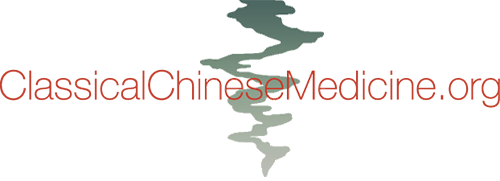

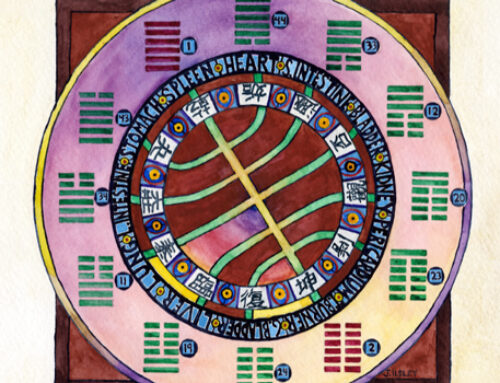

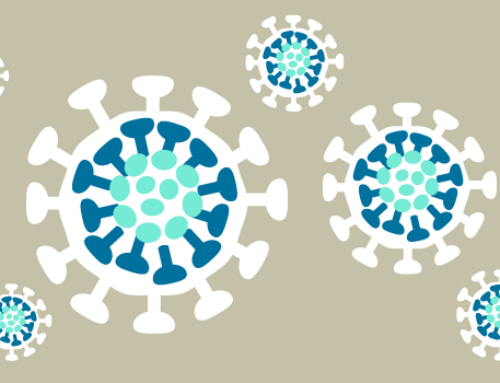

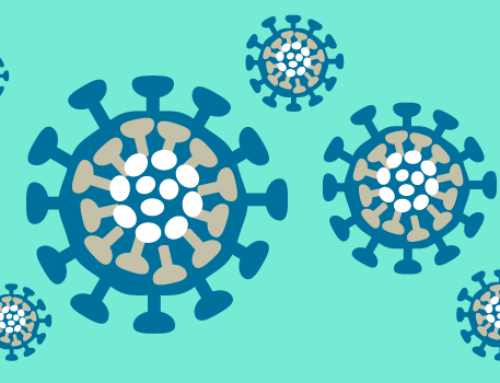

Leave A Comment
You must be logged in to post a comment.